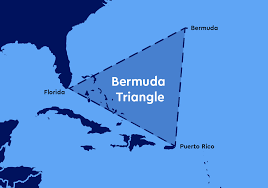The maritime world is filled with numerous vessel types, each designed for specific purposes. Among these, the VLCC — Very Large Crude Carrier — stands out as one of the most colossal and significant ships in the global shipping industry. Designed specifically for the transportation of crude oil across vast distances, VLCCs are crucial to the functioning of the global oil trade. In this blog, we will explore what a VLCC ship is, its features, importance in global trade, design specifications, and the challenges associated with operating such a massive vessel.
Table of Contents
ToggleWhat is a VLCC Ship?
VLCC stands for Very Large Crude Carrier. These are oil tankers that are primarily used to transport crude oil in bulk. VLCCs are among the largest ships in the world, with a typical deadweight tonnage (DWT) ranging from 200,000 to 320,000 metric tons. The term “VLCC” is part of a broader classification of crude oil tankers, which also includes Aframax, Suezmax, and ULCC (Ultra Large Crude Carrier) vessels.
VLCCs are commonly used to carry crude oil from oil-producing countries in the Middle East and West Africa to major markets in Asia, Europe, and North America. Because of their enormous size, they are not suitable for passing through narrow canals like the Panama Canal or Suez Canal (in their largest form), but some modified versions can pass through certain modernized locks or take alternative routes.
Key Features of VLCC Ships
-
Size and Capacity:
-
Length: Around 330 meters (1,082 feet)
-
Beam (width): Approximately 60 meters (197 feet)
-
Draft: Up to 22 meters (72 feet)
-
Cargo capacity: Up to 2 million barrels of crude oil
-
-
Double Hull Construction:
Modern VLCCs are built with a double-hull design for enhanced safety. This means there are two layers of watertight hull surface, significantly reducing the risk of oil spillage in case of a hull breach. -
Slow Steaming:
VLCCs generally operate at slow speeds (typically around 15 knots) to maximize fuel efficiency and reduce operational costs. -
Engine and Propulsion:
These ships use powerful low-speed diesel engines and are equipped with large propellers. The size of the machinery matches the scale of the vessel and ensures steady movement despite the heavy load.
Economic Importance of VLCCs
VLCCs play a vital role in the global oil supply chain. They are used to transport vast quantities of crude oil across oceans at a relatively low cost per barrel, which makes them highly economical. With global oil consumption reaching over 100 million barrels per day, these ships help bridge the gap between supply and demand across continents.
VLCCs are especially favored for long-haul routes because of the economies of scale they offer. Transporting oil in such large quantities at once significantly reduces the transportation cost per unit. This is especially important for countries that import most of their energy resources.
Ports and Terminals Handling VLCCs
Due to their immense size, only certain ports around the world can accommodate VLCCs. These ports have deepwater terminals with specialized infrastructure to handle large volumes of oil. Some of the key ports that can accommodate VLCCs include:
-
Ras Tanura (Saudi Arabia)
-
Rotterdam (Netherlands)
-
Fujairah (UAE)
-
Singapore
-
Port of Houston (USA)
Many VLCCs also rely on offshore mooring systems like SPMs (Single Point Moorings) and FSO (Floating Storage and Offloading) units for loading and discharging, especially where port infrastructure is not adequate.
Environmental and Safety Concerns
Despite their efficiency, VLCCs pose significant environmental and safety challenges:
-
Oil Spills:
Any accident involving a VLCC can result in catastrophic oil spills, causing severe environmental damage. The 1989 Exxon Valdez spill, though involving a smaller vessel, showcased the potential dangers associated with oil transportation. -
Ballast Water:
VLCCs use large amounts of ballast water for stability, which can lead to the spread of invasive marine species when discharged in a different part of the world. -
Air Pollution:
Like other large ships, VLCCs emit greenhouse gases and sulfur oxides from their engines, contributing to air pollution and climate change. However, the shipping industry is working towards adopting cleaner fuels and emission-reducing technologies.
Technological Innovations in VLCCs
To improve efficiency and reduce the environmental impact, modern VLCCs are incorporating various innovations:
-
Scrubbers: These are installed to reduce sulfur emissions.
-
LNG-fueled Engines: Some new VLCCs are being built or retrofitted to run on liquefied natural gas (LNG), a cleaner alternative to traditional bunker fuel.
-
Autonomous Navigation Systems: Technology is being developed to enhance navigation, collision avoidance, and route optimization.
-
Hull Coatings: Advanced anti-fouling coatings reduce drag and improve fuel efficiency.
Challenges in Operating VLCCs
Operating such massive vessels comes with its own set of difficulties:
-
Navigational Challenges: Maneuvering a VLCC requires a vast turning radius and significant stopping distance, making it difficult in congested waters.
-
Port Limitations: Limited port access can lead to delays and increase costs.
-
High Maintenance Costs: Regular dry-docking, hull cleaning, and equipment servicing are expensive but necessary.
-
Geopolitical Risks: Routes taken by VLCCs often pass through politically sensitive areas like the Strait of Hormuz, exposing them to risks of piracy or conflict.
Conclusion
VLCCs are engineering marvels that epitomize scale, efficiency, and logistical mastery in maritime transport. Their role in maintaining the flow of global energy resources cannot be overstated. As the world moves towards greener energy alternatives, the design and operation of VLCCs will continue to evolve to meet environmental standards while ensuring the reliable supply of crude oil.
Understanding the complexities and capabilities of VLCCs offers a glimpse into the immense scale of the global oil trade and the critical role shipping plays in our interconnected world. Whether you’re an industry professional, a maritime enthusiast, or simply curious, VLCCs represent one of the most fascinating aspects of modern maritime logistic.
